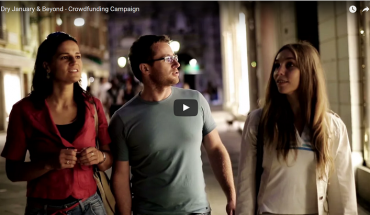Research shows that parents – even the super-diligent ones – tend to overlook the health of their children’s eyes. Yes, they make a point of taking them to regular appointments to go and see the dentist, but an eye examination is rarely on the ‘to do’ list. According to research by The Eyecare Trust, a charity that raises awareness about eye health, half of all children aged eight and under have never had a sight test yet 88 per cent regularly visit their dentist. This is despite the fact that eye tests are free in the UK for children up to the age of 16, (up to 19 for full-time students).
The consequence of this oversight can be serious. The Eyecare Trust estimates that one in five school-aged children have an undiagnosed vision problem. Rosie Gavzey, [CORR] optometrist and a director of the Eyecare Trust says: “Good vision during a child’s early years is vital as visual learning accounts for 80 per cent of the entire learning process. Children who have uncorrected vision problems can fall behind their classmates and lose self-confidence.”
Clare Holland, an optometrist who practises in London, says that parents need to be made aware that visiting an eye doctor is a necessity: “We need to get this message across. At the moment, there is a ‘wait and see’ attitude and an expectation that the child will complain. In fact, this rarely happens because the child just accepts the situation as normal.”
Some conditions, like a squint, are easy to spot, but many others have subtle signs. Tell-tale clues that something may be wrong with your child’s vision includes difficulty picking up small objects, being unusually clumsy with poor hand/eye coordination, and rubbing the eyes frequently.
So what age is the right age to start regular eye examinations? “The year before a child goes to reception class in school is ideal,” explains Clare Holland. “There is a lot we can do if we pick up a potential problem at this age and stop a small problem getting worse.”
For example, lazy eye, or amblyopia, occurs when one eye is normal and the other is considerably long-sighted. The child will manage with the strong eye, but the condition gradually causes the weak eye to become lazier and lazier. “If you don’t pick this up, it is much harder to strengthen the weak eye in later years,” says Holland, who explains that simply wearing contact lenses or special glasses can correct the problem.
All children should have annual eye examinations until the age of eight, when eyesight is usually fully developed. After that, a check-up every two years is fine.
It pays dividends to seek out practices that specialise in treating children. Asking for recommendations from other parents is also a tried and tested way to find ‘child-friendly’ eye doctors.
Dr Clyde Alexander is a partner at Alexander Kobrin Optometrists in Potters Bar, Hertfordshire, which is mainly devoted to children, and their parents. He goes a step further and advises parents to ask for a visual skills test as well, which is not part of the standard eye test. This is a way to measure the ability of the eyes to focus, line up and track across a page and it can be missed. “A child’s eyes are developing all the time, but they should be working according to certain known parameters. If for whatever reason, a child is struggling to focus and move his or her eyes efficiently, it can have a huge knock-on effect on skills like reading.”
The best time for this visual skills test is probably around the age of five or six. Dr Alexander uses an instrument with infrared sensors which records eye movements as a child reads from a text. All children should be tested, not just those who are falling behind. “Quite frankly, regardless of the child’s ability, it is a good idea to get visual skills assessed, otherwise you don’t know if a child is being held back,” says Dr Alexander, who suggests that the test should be repeated at two-year intervals to check progress.
Visual skills tests can also be useful when a child already has a diagnosis of dyslexia, or another related learning difficulty. “The eye problem is not causing the dyslexia, but it may be contributing to the symptoms.”
When a diagnosis has been made, there are various ways to try and correct the problem. In the first instance, eye exercises done at home under a parent’s supervision can help to strengthen weak muscles that are contributing to convergence and focusing problems. A typical exercise is repeatedly focusing on a near object for a couple of seconds and then one at a distance for a couple of seconds. “The majority of children will benefit from eye exercises but they can usually do these exercises for a maximum of around 15 minutes each day because they are quite intense,” says Dr Alexander.
Special glasses can also help the eye’s ability to focus.
Coloured filters laid over a page of text, have also been found to work to correct tracking problems, when a child finds it hard to follow a line of text due to pattern glare. This is when the contrast of black print on a white background creates hyperexcitation of the visual cortex, leading to rapid eye movements. The child’s eyes literally jump around on the page, making it almost impossible to read effectively.
- Biden Declines Second Term: Health Concerns - 23rd July 2024
- New catheter coating stops bacteria cells from swarming - 10th June 2024
- AI-designed catheters could dramatically reduce urinary tract infections - 10th June 2024






